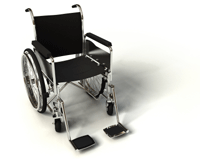 One of the ongoing dilemmas in Building insurance claims involves determining a valid cost for the replacement or restoration of damaged property. When this insurance is first written, there are a number of approaches for arriving at a reasonable amount of coverage — yet nearly all of the commonly used methods have their weaknesses.
One of the ongoing dilemmas in Building insurance claims involves determining a valid cost for the replacement or restoration of damaged property. When this insurance is first written, there are a number of approaches for arriving at a reasonable amount of coverage — yet nearly all of the commonly used methods have their weaknesses.
For example, some businesses want coverage equal to what they have paid for the building. However, this ignores the value assigned to the location, which might have increased (or decreased, depending on the location) significantly. Others prefer using real estate appraisals; but this leads back to the sales price, not the construction price. Square footage and building material cost estimators are also common.
However, even if they are fairly accurate in methodology, they depend on the accuracy of the data put into the formulas (garbage in — garbage out). Add the effect of changing zoning or building ordinances, and it’s no wonder that insurance industry experts estimated that the average commercial building might be underinsured by as much as 40%.
As a construction professional, you’re well placed to know the cost of restoring or rebuilding after a loss. What others “guesstimate,” you must do accurately for a living. Ordinances and zoning laws that are Greek to most people form part of your everyday knowledge base.
We can review the valuations of your buildings and recommend any necessary changes to your coverage. From that point, let’s explore opportunities to improve the accuracy of building valuations for your clients and ours. Perhaps together we can make inroads into that 40% gap.














